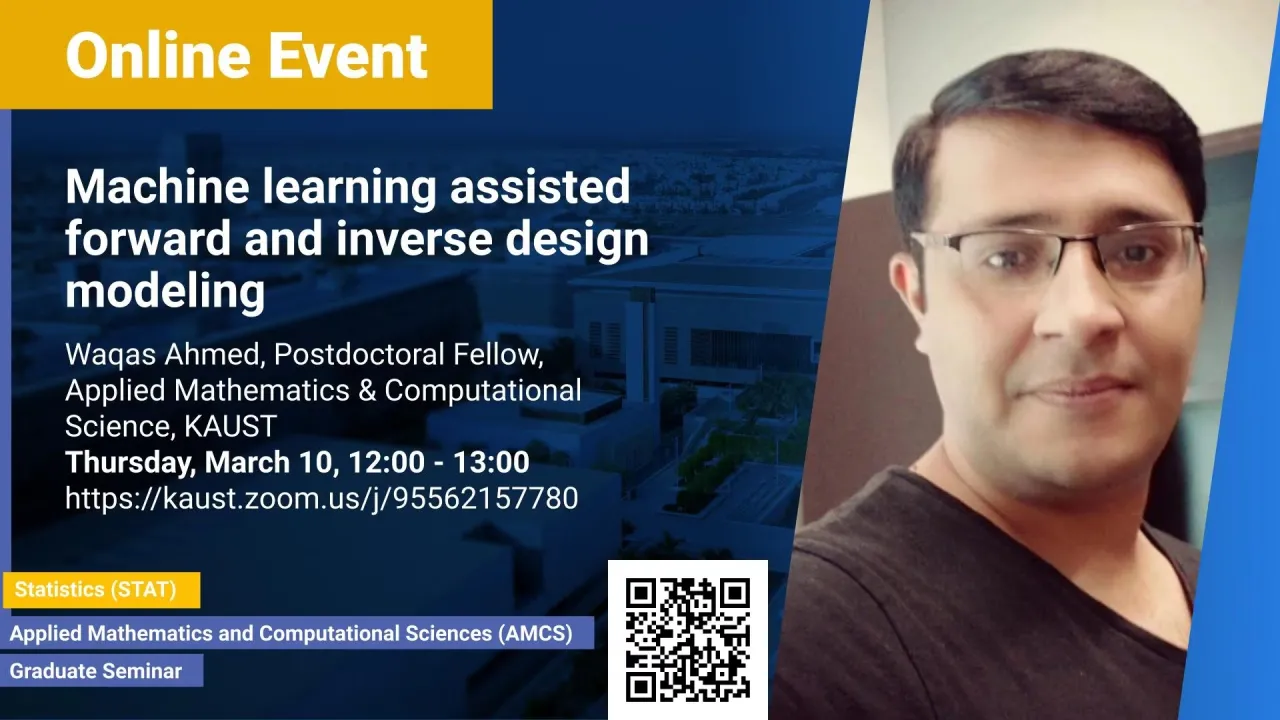
Machine learning assisted forward and inverse design modeling
In recent years, machine learning has proven to be efficient in solving various physical problems through data-driven approaches. For example, in wave physics, models based on analytical and numerical schemes employ intensive trial-and-error tuning of material (and geometrical) parameters for 'on demand' wave properties, which require deep understanding of the physics and are computationally expensive. As a result, it is desired to develop intelligent models that learn the bidirectional mapping between different physical quantities and automate technological device design. In this presentation, I will discuss novel generative models for forward and inverse predictions that outperform human performance. In particular, I will show how machine learning can be used to design broadband acoustic cloaks, unidirectional non-Hermitian structures, and for solving the inverse scattering problem of shape recognition.
Overview
Abstract
In recent years, machine learning has proven to be efficient in solving various physical problems through data-driven approaches. For example, in wave physics, models based on analytical and numerical schemes employ intensive trial-and-error tuning of material (and geometrical) parameters for 'on demand' wave properties, which require deep understanding of the physics and are computationally expensive. As a result, it is desired to develop intelligent models that learn the bidirectional mapping between different physical quantities and automate technological device design. In this presentation, I will discuss novel generative models for forward and inverse predictions that outperform human performance. In particular, I will show how machine learning can be used to design broadband acoustic cloaks, unidirectional non-Hermitian structures, and for solving the inverse scattering problem of shape recognition.
Brief Biography
Waqas Ahmed is a Postdoctoral Research Fellow in the Waves in Complex Media Group at King Abdullah University of Science and Technology (KAUST), Saudi Arabia. He earned his Ph.D. in Photonics Engineering through the Erasmus Mundus Joint Doctorate (EMJD) program, which was organized by Universitat Politècnica de Catalunya (Spain), Universita degli Studi di Firenze (Italy), Karlsruhe Institute of Technology (Germany), and Université Paul Cèzanne Aix Marseille III (France). His research interests include Non-Hermitian Optics, Machine Learning, Acoustics, and Metamaterials.